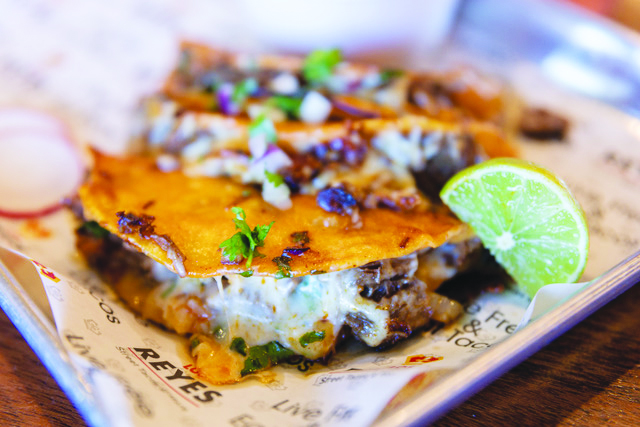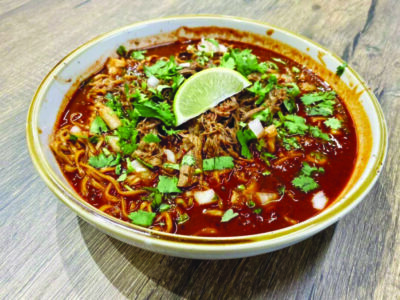The latest from NH’s theater, arts and literary communities
• Update: The Manchester Community Music School’s faculty performance of “Chanson d’Amour” featuring Harel Gietheim on cello and Piper Runnion on harp has been rescheduled for Friday, March 24, at 7 p.m. at the school, 2291 Elm St. in Manchester. Admission is free but pre-register at mcmusicschool.org to attend in person or online.
• Earth Day art: The Manchester Artists Association has original art works on display in the exhibit “Love Our Planet” at the New Hampshire Audubon Massabesic Center (6 Audubon Way in Auburn) through Saturday, April 29, from noon to 5 p.m. on days the center is open, according to a press release. Artists will exhibit more than 30 original works in oil, acrylic, pastel, watercolor, mixed media and photography, and the works will be available for purchase, the release said. See manchesterartists.com.
Ukrainian Easter eggs
The League of NH Craftsmen Meredith Fine Craft Gallery (279 Daniel Webster Hwy. in Meredith; nhcrafts.org, 279-7920) will offer two Ukrainian Easter Egg classes with Shannon Wallis on Saturday, March 25 (classes are at 9 a.m. and 2 p.m.), according to a press release. Learn the Ukrainian method of decorating eggs and create an egg to keep, the release said. The class costs $50 per student plus a $12 materials fee paid to the instructor on the day of the class, the release said. Sign up by Friday, March 17, by calling 279-7920 or go to meredith.nhcrafts.org/classes.
• Telling her story: Singer-songwriter Kimayo will perform at Bedford Presbyterian Church (4 Church Road in Bedford) on Sunday, March 5, at 5 p.m. as part of her “My Queer Faith” tour, according to a press release. The event is free (and open to adults and mature teens, the release said); reserve a spot at bit.ly/BPC-MQF-Concert.
• Jazz jam: Ted Herbert Music School, operated by the Majestic Theatre, will host an open mic jazz jam on Sunday, March 5, from 5 to 6:30 p.m. open to students and musicians of all ages and abilities, according to a press release. The cost to participate is $5, free for current Ted Herbert Music School Students. The jam will take place at the Ted Herbert Music School Majestic Theatre Studios (880 Page St. in Manchester), the release said. No signup is required, just show up with your instrument (drums, piano and guitar amp will be provided), the release said. For more on Ted Herbert, see tedherbert.com or call 669-7469.
• Luck be a lady: The Palace Youth Theatre is holding auditions for its May performances of Guys and Dolls Jr. on Monday, March 6, at 5 p.m., 6 p.m. and 7 p.m. at Forever Emma Studios (516 Pine St. in Manchester) according to a press release. The auditions are for performers in grades 2 through 12. Auditioners will be expected to stay for their entire one-hour slot and will learn a dance and be asked to sing after (a short section of a song), the release said. To schedule an audition time, email [email protected] with the performer’s name, age and preferred audition time, the release said.
Martiello on theremin
Chris Martiello will present a theremin concert on Friday, March 3, at 6:30 p.m. at Whipple Hall (25 Seamans Road in New London) with a Q&A and light refreshments to follow. See centerfortheartsnh.org.
• Young artist competition: The Portsmouth Symphony Orchestra is accepting applications for its annual young artist competition with the winning high school musician to perform at the June 11 concert with a full orchestra, according to a press release. The competition is open to high school students from New Hampshire (as well as the Seacoast region of Maine and Massachusetts) performing orchestral instruments, the release said. Send an audition video and application by March 15; finalists will perform before a live audience on Saturday, April 1, the release said. See portsmouthsymphony.org for information about how to apply.
• Crafting partnership: The Currier Museum of Art (150 Ash St. in Manchester; currier.org) is partnering with the League of NH Craftsmen for a series of workshops with local master craft artists, according to a Currier email. The workshops will take place on the second Saturdays of the month from 10:30 a.m. to 3:30 p.m. On Saturday, March 11, the class is “Tapestry Weaving Basics” with Lisa Almeia. Students will create images using a simple tapestry loom, according to the description. The class costs $125 and registration is open now. Future classes include “Basket Weaving” with Ruth Bolton on Saturday, April 8; “Jewelry Making” with Paulette Werger on Saturday, May 14, and “Soft Leather Cuff Bracelets” with Diane Louise Paul on Saturday, June 10, according to the website.
• Art camp: The Currier has also announced the themes and dates and opened registration for its summer arts camps for ages 6 to 14. The camps will cost $350 per week and run the weeks of June 26 (when the theme is “Air”), July 10 (“Earth”), July 24 (“Fire”), Aug. 7 (“Water”), and Aug. 14 (“Energy”). Go to currier.org to register and for more information. For more area day camps (and a few overnight ones), check out last week’s cover story in the Hippo. See hippopress.com to find the Feb. 23 e-edition; the story starts on page 12.
• Save the date: The 2nd annual Manchester Arts & Crafts Fair will be held Saturday, Aug. 12, from 10 a.m. to 3 p.m. in Veterans Memorial Park in downtown Manchester, according to a press release. The event will feature more than 30 booths, food trucks, the Manchester City Library Bookmobile and an interactive art wall for kids run by Unchartered Tutoring, the release said. See manchesterartsandcraftsfair.com.
Vanities
Creative Ambitions Performance Studio of NH, a new professional theater company, will present its first production, the comedy-drama Vanities by Jack Heifner, at the Hatbox Theatre (Steeplegate Mall, 270 Loudon Road in Concord; hatboxnh.com, 715-2315), according to a press release. The show opens Friday, March 3, at 7:30 p.m. and runs through Sunday, March 19, with shows at 7:30 p.m. on Fridays and Saturdays and 2 p.m. on Sundays. Tickets cost $22 for adults; $19 for students and seniors, the release said. Courtesy photo.
• “I wish I were big”: Kids Coop Theatre will present Big, the Musical, based on the 1987 movie, featuring performers ages 8 to adults on Friday, March 17, at 7 p.m.; Saturday, March 18, at 7 p.m. and Sunday, March 19, at 1 p.m. at the Derry Opera House (29 West Broadway in Derry). Tickets cost $15 and are available at kidscooptheatre.ludus.com.
• Coming up at Gibson’s: Several author events have been added to the schedule for March and beyond at Gibson’s Bookstore (45 South Main St. in Concord; gibsonsbookstore.com, 224-0562). Journalist Sherry Boschert will visit Gibson’s on Tuesday, March 21, at 6:30 p.m. to discuss her book 37 Words: Title IX and Fifty Years of Fighting Sex Discrimination, according to a press release. Journalist and author Christine Kenneally will discuss her book Ghosts of the Orphanage: A Story of Mysterious Deaths, a Conspiracy of Silence and a Search For Justice (which looks at, among other places, St. Joseph’s, a Catholic orphanage in Vermont), at Gibson’s on Thursday, March 23, at 6:30 p.m., according to a press release. Author Hank Phillippi Ryan will present her latest thriller The House Guest and discuss her work with author Sarah Stewart Taylor on Wednesday, March 29, at 6:30 p.m., a press release said. Vermont authors Rebecca and Sallyann Majoya will come to Gibson’s on Wednesday, April 12, at 6:30 p.m. to discuss their shared memoir Uncertain Fruit: A Memoir of Infertility, Loss, and Love. Dennis Lehane will discuss his newest novel Small Mercies as part of a virtual author event with indie bookstores with Gillian Flynn on Tuesday, April 25, at 8 p.m. (sign up online for this ticketed virtual event). Find more upcoming author and book events in our book listings, this week on page 31.
• Irish afternoon: The Center for the Arts will celebrate St. Patrick’s Day with a performance of Irish music from the Sunapee Singers and Irish step dancing by the McGongale Irish Step Dancers on Sunday, March 19, at 4 p.m. at Whipple Town Hall in New London (on the corner of Main Street and Seamans Road), according to a press release. Tickets cost $18, $8 for students (children 5 and under are admitted free); purchase tickets at centerfortheartsnh.org or with cash or check at the door, the release said.
• History of the vote: Liz Tentarelli, president of the League of Women Voters NH, will use historic photos and documents to discuss women’s journey to obtain the right to vote, from the 1848 Women’s Rights Convention in Seneca Falls to the ratification of the 19th amendment in 1920, on Tuesday, March 21, at 5:30 p.m. at the Tracey Memorial Library (304 Main St. in New London), according to a press release. Reserve a spot by emailing [email protected].
In bloom
The New Hampshire Antique Co-op (323 Elm St. in Milford; 673-8499, nhantiquecoop.com) will present the show “In Full Bloom: Floral Still Life & Garden Paintings from the 19th Century to Present” Friday, March 24, through Thursday, Aug. 31. The exhibit will feature works from artists of the late 1800s to the present that capture spring and summer, according to a press release. A garden party opening reception will be held on Sunday, March 26, from 1 to 3 p.m. The Co-op is open Tuesdays through Sundays from 10 a.m. to 5 p.m.
• 400 years of Portsmouth history: The Pontine Theater will celebrate Portsmouth’s 400th anniversary with the original production Dearly Earned at Pontine’s 1845 Plains School House Theatre (1 Plains Ave. in Portsmouth; pontine.org). The play is based on Portsmouth’s 19th-century industrial history and the lives of workers, according to a press release. Shows are Friday, March 17, through Sunday, March 26. Shows will take place Fridays at 7 p.m., Saturdays at 3 p.m. and Sundays at 2 p.m. Tickets cost $29.










